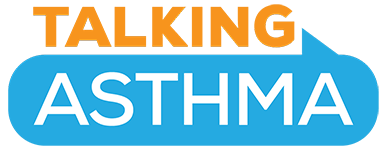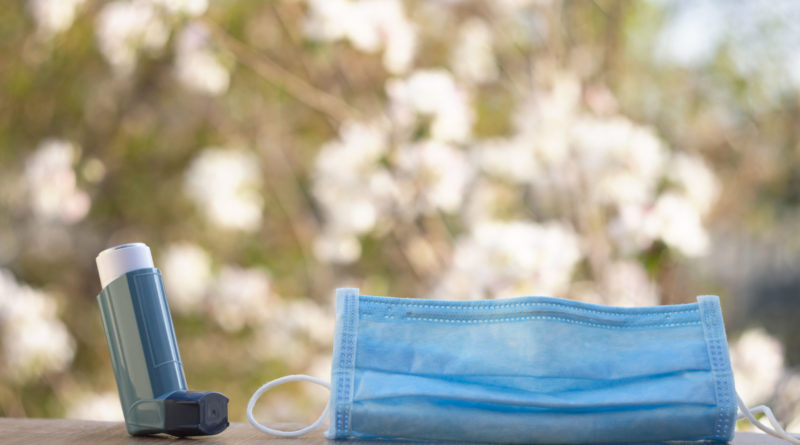Given the devastating impact that COVID-19 can have on the respiratory system, it is critical that asthma sufferers need to be especially vigilant at this time. Consider these 5 Tips for Asthma Management:
- Make An Action Plan
The CDC has specific recommendations for asthma patients to develop a personalized asthma action plan. This includes:
- having a good supply of medication
- knowing how to use an inhaler correctly
- avoiding asthma triggers (see item 2 below)
- cleaning and disinfecting frequently touched surfaces, such as door handles and countertops
- avoiding any cleaning products that could trigger asthma
- following steps to reduce stress and anxiety, which could trigger asthma attacks
- Avoid Triggers
The CDC recommends avoiding typical asthma triggers (see source 1) during this time such as:
- Tobacco smoke
- Dust mites
- Outdoor air pollution
- Cockroach allergens
- Pets
- Mold
- Smoke from burning wood or grass
Fortunately, at present there is no evidence that people with asthma are more likely to contract COVID-19. In fact, a 2020 study of 140 hospitalized people with COVID-19 in Wuhan, China, did not find any people suffering with asthma as an underlying comorbidity.
- Stay Informed
Additional research at University of Wisconsin (reference source 2) suggests that certain types of allergic asthma may actually lower the chances of contracting COVID-19:
“We were surprised to learn that the COVID-19 pandemic in China did not seem to impact people with asthma as severely as we would’ve expected it to,” said Daniel Jackson, MD, lead investigator and associate professor of pediatrics and medicine at UW School of Medicine and Public Health. “Knowing that other risk factors for severe COVID-19 illness like hypertension and obesity lead to increased ACE2 expression, we wanted to determine if patients with allergies and asthma could have reduced ACE2 gene expression as a potential explanation for this unexpected early finding from the outbreak.”
Researchers at UW used data from three different cohorts of children and adults to determine whether asthma and respiratory allergy are associated with reduced ACE2 expression in airway cells. In all three studies, total RNA was extracted from nasal or lower airway samples. Within the cohort of children (n=318), moderate and high levels of allergy were associated with progressively greater reductions in ACE2 expression. Children with high levels of allergy and asthma had the lowest ACE2 expression. In the adult cohorts (n=47), allergen exposure led to significant reductions in ACE2 expression as well.
However, that it is likely that additional factors beyond ACE2 expression modulate the response to COVID-19 in allergic individuals, and additional research that examines those factors may also provide important insights into COVID-19 disease pathogenesis. Future studies focused on respiratory allergy, asthma and, perhaps, other allergic disorders are needed to provide greater understanding of the impact of underlying allergy on COVID-19 susceptibility and disease severity, and further examination of these relationships could identify novel therapeutic strategies to more effectively control this pandemic.
- Stay Cautious
Even though this research is promising, the Asthma and Allergy Foundation of America (AAFA), warns that other strains of coronavirus can worsen asthma. People with asthma should continue to take all asthma medications, including rescue inhalers, steroid inhalers, steroid pills, and biologics as directed. Uncontrolled asthma is a serious health threat for people with asthma.
- Stay Covered
The CDC now recommends that Americans wear cloth face coverings (reference source 3) when you leave home to keep you from accidentally spreading the virus. A face covering can catch droplets from your mouth and nose, so you do not spread them to people nearby. You can use a scarf, a bandana, or a homemade mask. Use material that you can machine wash and dry without damage. To discern if a homemade face covering will be sufficient, shine a light through it. If you can see the light through it, it will not offer sufficient protection. Your face covering may need multiple layers. Make sure your face covering blocks the light but still allows you to breathe through it.
For more information regarding the issues surrounding asthma and COVID-19, please visit the CDC website at www.cdc.gov and Medical News Today at https://www.medicalnewstoday.com/articles/covid-19-asthma#covid-19-and-asthma.
Sources:

